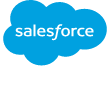Benefits of bringing cloud and communications service performance information into the CRM

Remote Monitoring & Management (RMM)/Network Management (NMS) and trouble ticketing systems are a domain of engineering, network operations and technical support departments. Typically, they live in their own silos as independent entities, very much isolated from CRMs, financial systems and usually exposing some information to customers via self-care portals.
This setup works well for break/fix and customer support purposes. However, there are substantial benefits of exposing service performance information to account management via a CRM.
Examples and screenshots in this post are based on Nextian and Salesforce.
Account management perspective
Missed revenues
More often than not, account management does not have insight into customer services as far as performance and usage are concerned. As a result potential revenues resulting from up-selling are missed.
| Problem | Alternative | Solution |
|---|---|---|
|
|
|
The information presented to account managers (who are non-technical) must be easily understandable and simpler than what RMM/NMS presents.
For example, Nextian upgrade opportunities have all the complexities removed and are easily comprehensible:

The image above shows an example of a customer virtual machine experiencing a high CPU usage over a long period of time.
Nextian upgrade opportunities are actionable (e.g., schedule customer call, create a CRM opportunity) and easily fit into CRM workflows. Knowing account, service and revenue enables managers to identify and manage upgrade potential as part of the regular sales funnel.
Elevated account management
Very often customer’s external perspective on service performance differs from the internal one. When customers call, account managers usually need to check with other departments (support, NOC, engineering) before having a meaningful conversation. This usually takes time and does not improve customer experience.
Consolidating service status, performance, ticketing and ordering information in the CRM gives a true 360° internal perspective providing independent and factual assessment on what is going on in the account.

On the individual subscription service level, Nextian can track the following service information in the CRM:
- Current operational status of a service as well as its individual elements
- Service availability timeline
- Key performance metrics (CPU utilization, up/down-stream bandwidth utilization, etc.)
- Cases/tickets open on the service
- Open service orders
All of this information is aggregated on account, product and location (e.g., data center) levels.

Perfect customer call timing
Reaching out to customers at the right time is one of the biggest challenges of account management.
Nextian can help with the following scenarios:
- Proactive account management — calling when customers experience problems to ensure that not only support is aware but also account management (“we’re on it”)
- Reactive account management — having immediate access to service information when called by customers (“yes, we’re aware of the problems”)
- Upselling the customer — ensuring that calls with up-sell/new offerings are made when customer has no current issues
Conclusions
Benefits of bringing service performance information into the CRM include:
- Increased revenues with automated discovery of upgrade opportunities for upselling
- Reduced churn via better customer experience: calling at the right time, informed account managers
- Reduced cost of swivel-chairing information between account management, support, customer care and others
Nextian is a vendor of Quote-to-Cash (QTC) software for cloud and communications helping providers accelerate growth and increase customer lifetime value.
Contact us today to find out how we can help you!
Related posts
2024 telecommunications industry trends in quote-to-cash
Learn about 2024 telecommunications industry trends: shift towards software, digital experience, automation, API-fication and AI & algorithms.
Enabling best-in-class customer support for cloud and communications services
Enable best-in-class customer support for cloud & communication services to reduce churn and increase customer lifetime value.
Salesforce data access tools overview
Discover options and tools for Salesforce data access, migration, integration, synchronization and reporting.
GET THE NEXTIAN ADVANTAGE
We help enterprises increase revenue, profitability and gain efficiencies by realizing the full potential of the Salesforce platform.




